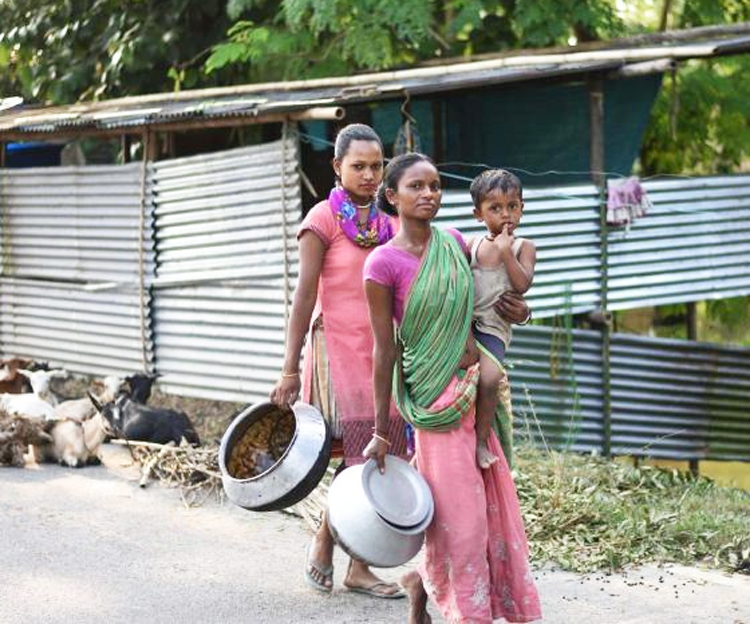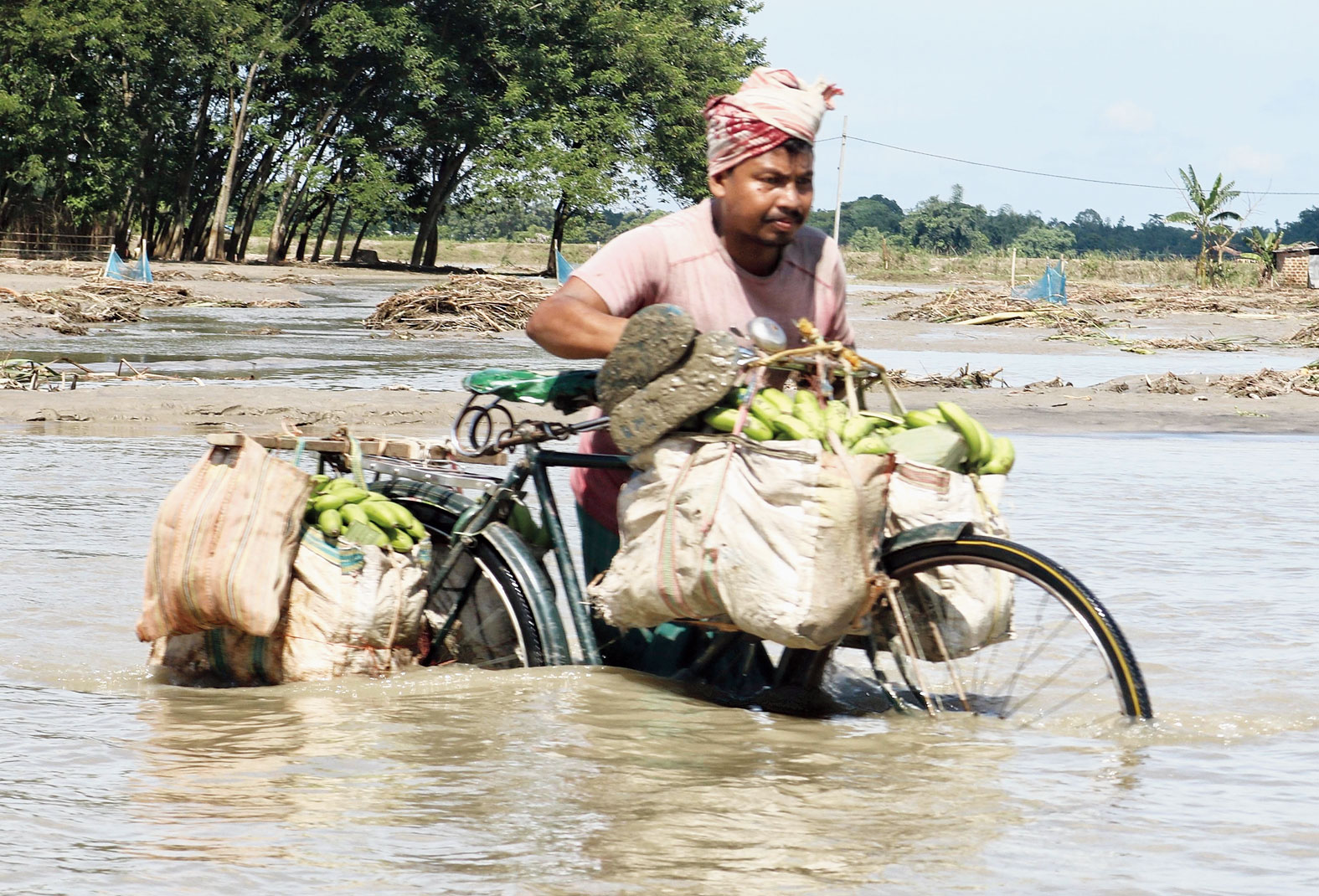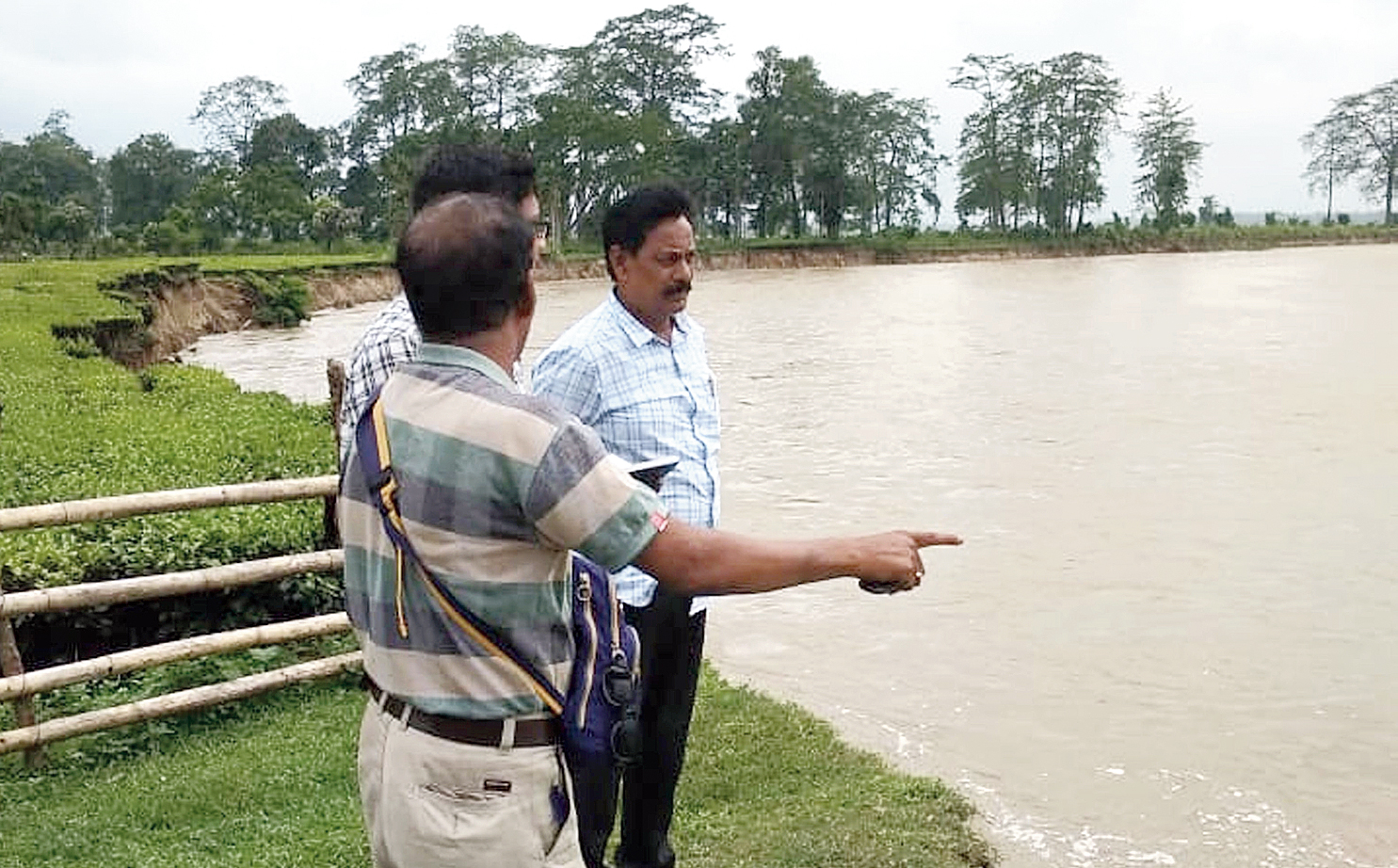Carsten Meiner and Kristin Veel wrote that crises and catastrophes have a cultural life for they expose covert wounds and emplaced hierarchies that are otherwise accepted. This kept ringing in my head when I visited eight relief camps in Assam’s Barpeta district. The state was grappling with yet another major flood, with districts in lower Assam experiencing sudden devastation when Bhutan opened gates to release excess water from the dam of the Kurichhu hydropower plant.
I went to two camps each in the villages of Chenglimari, Boitamari and Paanpara and one each in Kothalmurighat and Madhopur. It was interesting to note that it would always be men in the camps who would approach me first, narrating their stories of loss. It was only when I looked inside the plastic tents, the schools temporarily turned into camps and, most importantly, behind swathes of men that I saw the women — women with children, women cooking in backyards, and pregnant women. On talking to several of them, I realized how relief camps are not only exposing but probably also reinforcing the patriarchy that is integral to our everyday experience.
Women had not changed clothes for days in the camps. In a society where women’s bodies are sites of community honour, women in a crisis face serious threats of diseases. When the waters started receding, men would leave the camps and return with items from home. Yet, women were hardly brought a fresh pair of clothes to change into. Mobility also allowed men to access spaces where critical decisions were being taken, particularly with regard to relief from the State. Men, for example, had gathered near a police outpost or at a chowk to voice their frustrations about material not received. But the women,confined to their private spaces in the camp, could not be a part of such deliberations.
The people who were part of the decision-making process concerning relief were all men, be it the gaon buras tasked with receiving relief or the members of local clubs and organizations that were coordinating with the gaon buras or mandals responsible for relief distribution. There was little space to hear women’s voices, needs and problems. The Assam Disaster Management Manual, 2015 states that sanitary napkins, nutrition and additional care, including medical attention, be made available for pregnant women in relief camps. But this was hardly the case in any of the camps I visited. Menstruating women were taking pieces of clothes to stop the bleeding and had not changed them for days. Many camps located in remote areas had not been visited by a medical team.
Chenglimari, Paanpara and Boitamari were the worst hit when it came to receiving medical attention and relief material also because of administrative politics. Dhumarpur, which has eight villages including Chenglimari, Paanpara and Boitamari, was under Revenue Circle Jalah before the creation of the Bodoland Territorial Area Districts. This area went to the Bajali Revenue Circle after BTAD had been carved out. As a result, relief material came from far-away Patacharkuchi. Medical teams had to come from distant Nityananda even though Salbari hospital, which falls under BTAD, was within walking distance. The disaster manual is blind towards certain gendered activities like cooking, which is largely done by women in relief camps. Women also have the additional task of finding dry firewood during floods. The manual forbids the provision of cooked food in camps but makes no arrangement to provide firewood.
In camps where people were living in open areas, women had to relieve themselves on rafts on water in front of people, causing them embarrassment and exposing them to predators. Young girls had to be protected in the camps that had men from other communities. Even at a time of crisis, a single camp had been spatially demarcated between Bodos and Muslims.
Once the floods disappear and people move back to what is left of their homes, young girls start to fear that they might be married off and their education discontinued. The economic crisis accompanying floods force household heads — men — to perceive these girls as additional mouths to feed. Reports reveal that domestic violence against women and alcoholism among men register a spike after such catastrophes.
The State as an idea needs to be imagined, and imagined differently. The State is largely absent in the lives of women in rural India. But it gets imagined in crises like these, when they finally have an interaction with the State. For women in these relief camps, the State remains absent. It is a State that is out of their reach, a State that does not care enough about their needs.
These interactions between the women and the State revealed through the politics of relief are critical and must be documented. It must be pointed out that large numbers of women were left out of the NRC draft and that women continue to be harassed through numerous hearings. This is because narratives of women’s imagination and past experiences of, and encounters with, the State were hardly circulated to inform policies such as the National Register of Citizens. It is time that women’s experiences and collective memories in sites such as relief camps are retrieved and disseminated to not just sensitize laws but also reveal violence that is structural and quotidian.













